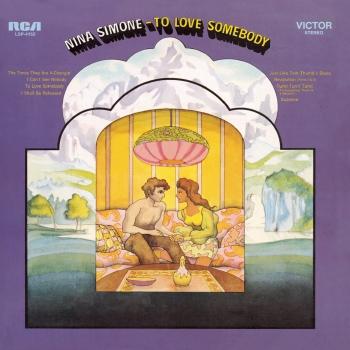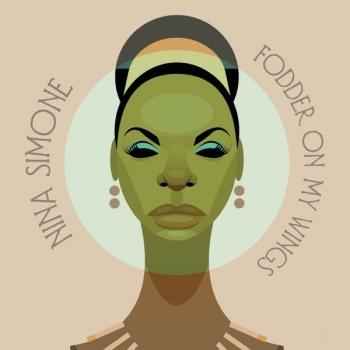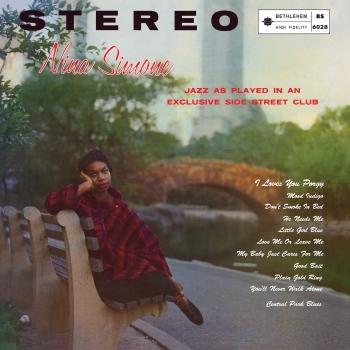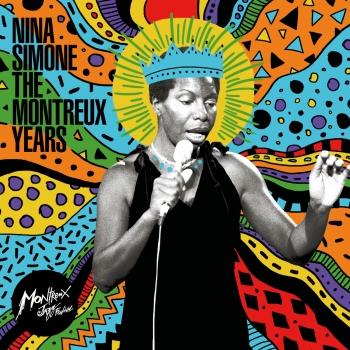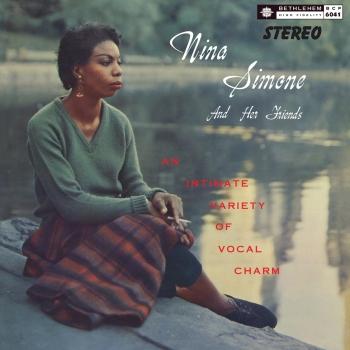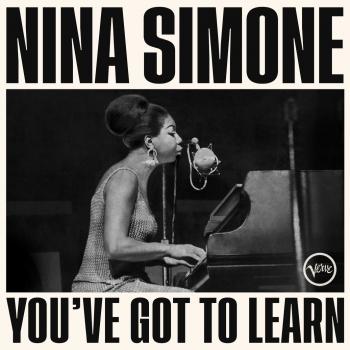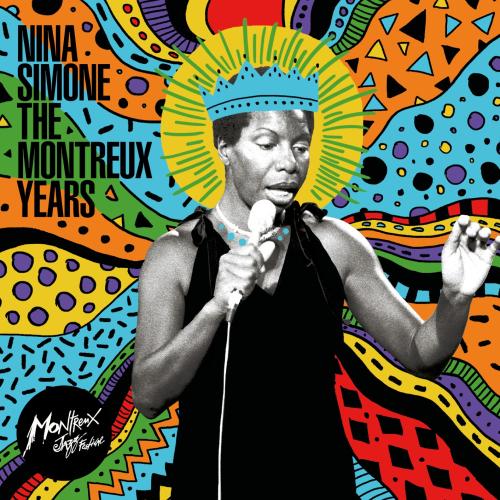
Nina Simone: The Montreux Years Live (Remastered) Nina Simone
Album info
Album-Release:
2021
HRA-Release:
25.06.2021
Album including Album cover
I`m sorry!
Dear HIGHRESAUDIO Visitor,
due to territorial constraints and also different releases dates in each country you currently can`t purchase this album. We are updating our release dates twice a week. So, please feel free to check from time-to-time, if the album is available for your country.
We suggest, that you bookmark the album and use our Short List function.
Thank you for your understanding and patience.
Yours sincerely, HIGHRESAUDIO
- 1 Someone to Watch Over Me (Intro) (Live – Montreux Jazz Festival 1987) 02:30
- 2 Backlash Blues (Live – Montreux Jazz Festival 1976) 07:24
- 3 I Wish I Knew How It Would Feel to Be Free (Live – Montreux Jazz Festival 1976) 06:07
- 4 See-Line Woman (Live – Montreux Jazz Festival 1990) 04:14
- 5 Little Girl Blue, Pt. 1 and 2 (Live – Montreux Jazz Festival 1976) 06:43
- 6 Don't Smoke in Bed (Live – Montreux Jazz Festival 1990) 04:46
- 7 Stars (Live – Montreux Jazz Festival 1976) 06:37
- 8 What a Little Moonlight Can Do (Live – Montreux Jazz Festival 1990) 04:26
- 9 African Mailman (Live – Montreux Jazz Festival 1976) 06:53
- 10 Four Women (Live – Montreux Jazz Festival 1990) 05:30
- 11 No Woman No Cry (Live – Montreux Jazz Festival 1990) 03:57
- 12 Liberian Calypso (Live – Montreux Jazz Festival 1990) 06:41
- 13 Ne Me Quitte Pas (Live – Montreux Jazz Festival 1990) 05:05
- 14 Montreux Blues (Live – Montreux Jazz Festival 1981) 03:27
- 15 My Baby Just Cares for Me (Live – Montreux Jazz Festival 1990) 03:57
- 16 Intro (Live – Montreux Jazz Festival 1968) 00:23
- 17 Go to Hell (Live – Montreux Jazz Festival 1968) 03:29
- 18 Just in Time (Live – Montreux Jazz Festival 1968) 04:40
- 19 When I Was a Young Girl (Live – Montreux Jazz Festival 1968) 04:42
- 20 Don't Let Me Be Misunderstood (Live – Montreux Jazz Festival 1968) 04:42
- 21 Ne Me Quitte Pas (Live – Montreux Jazz Festival 1968) 05:05
- 22 To Love Somebody (Live – Montreux Jazz Festival 1968) 04:21
- 23 Backlash Blues (Live – Montreux Jazz Festival 1968) 03:54
- 24 The House of the Rising Sun (Live – Montreux Jazz Festival 1968) 07:26
- 25 See-Line Woman (Live – Montreux Jazz Festival 1968) 04:43
- 26 Please Read Me (Live – Montreux Jazz Festival 1968) 03:21
- 27 Ain't Got No, I Got Life (Live – Montreux Jazz Festival 1968) 10:56
- 28 Gin House Blues (Live – Montreux Jazz Festival 1968) 06:25
- 29 I Wish I Knew How It Would Feel to Be Free (Live – Montreux Jazz Festival 1968) 08:42
Info for Nina Simone: The Montreux Years Live (Remastered)
Nina Simones Entwicklung von den späten Sechzigern bis zu den Neunzigern lässt sich anhand ihrer legendären Auftritte in Montreux nachvollziehen. Als Simone am 16. Juni 1968 bei der zweiten Austragung des Festivals zum ersten Mal die Bühne von Montreux betrat, baute sie eine dauerhafte Verbindung zum Montreux Jazz Festival und seinem Schöpfer und Leiter Claude Nobs auf. Dieses einzigartige Vertrauen und die damit verbundene Energie sind bei den Aufnahmen deutlich zu spüren.
Simones facettenreicher und radikaler Lebensweg kommt im Album «Nina Simone: The Montreux Years» einfach wunderbar zum Ausdruck. Von Ninas grossartigem und emotionalem Auftritt im Jahr 1968 bis zu ihrem feurigen und überraschenden Konzert im Jahr 1976, einem der bemerkenswertesten Auftritte des Festivals überhaupt, enthält die Sammlung Aufnahmen von allen ihren fünf legendären Montreux-Konzerten – 1968, 1976, 1981, 1987 und 1990.
Enthalten ist außerdem rares und bisher unveröffentlichtes Material aus Claude Nobs` umfangreicher Archivsammlung (Montreux Sounds); Nina Simone-Fans werden insbesondere von dem kraftvollen „I Wish I Knew How It Would Feel To Be Free“, dem berührend furchtlosen „Four Women“ sowie ihrer ergreifend schönen Darbietung von „Ne Me Quitte Pas“ begeistert sein.
Neben einer eindringlichen Version von Janis Ians kraftvollem „Stars“ (das Simone zum allerersten Mal während ihres Auftritts in Montreux im Jahr 1976 coverte) findet sich ein selbstbewusstes und packendes Remake von Bob Marleys Ballade „No Woman No Cry“ aus dem Jahr 1990. Ihren krönenden Abschluss findet die Kollektion mit der Zugabe aus Nina Simones letztem Auftritt beim Montreux Jazz Festival; einem ihrer beliebtesten und bekanntesten Songs – dem ausgelassenen „My Baby Just Cares For Me“, auf dem sich sämtliche Facetten ihres Lebens und ihrer Musik widerspiegeln.
Nina Simone
Digitally remastered
Nina Simone
Nina Simone (1933-2003) holds a unique place amongst the great jazz performers of all time. What sets her apart from other jazz masters is not only her captivating and sultry voice and skillful command of the piano, but her aptitude in almost every genre of music there is. She has taken soul, jazz, and pop to new levels, as well as proving herself in blues, gospel, Broadway, folk, classical, and opera. She also performed and recorded many of her own compositions.
Born Eunice Waymon in North Carolina, Simone grew up in a family with eight children. She started out as a classical pianist, but in 1954 the financial necessity of her family led her to take a job in an Atlantic City nightclub. After auditioning for the gig, the owner told her that she could have it, but only if she agreed to sing as well. Thus, Nina ("little one") Simone (French actress Simone Signoret), was born.
In the late 1950s, Simone began recording on a small label, Bethlehem Records. In 1959, she had a Top 20 hit. "I Loves You Porgy," a song from George Gershwin’s musical "Porgy and Bess." This was the only song that Simone recorded in her entire career that made the Top 40. Hits were not a big concern, however. Simone did just fine performing in nightclubs and making albums, most of them live recordings. She recorded nine albums in the early 1960s alone.
In the mid-‘60s, inspired by the Civil Rights Movement, Simone composed several songs, including "Old Jim Crow" and "Mississippi Goddam" which were issued on her first album with Philips (Nina Simone in Concert). "Mississippi Goddam" was written in response to the death of four black children in a church bombing, in 1963. It was her protest songs that best demonstrated Simone’s amazing ability to communicate, deeply and clearly, human emotion, especially those of Black people in the U.S.A. It was around this time that people began referring to Simone as the "High Priestess of Soul," after she put out an album of the same name.
Along with her original songs, Simone chose some diverse covers. Songs like Weill–Brecht’s "Pirate Jenny," "I Put a Spell on You," and "See Line Woman," were among some of the others that Simone transformed into classics. Her experimentation with timing, her use of silence, her low and intense vocals, her impeccable piano playing capabilities, and her inimitable live act, turned every song she sang into a fresh and magnificent Nina Simone creation.
In the late 60s and early 70s, Nina was recording for RCA. An original song, "Young, Gifted & Black" was considered somewhat of a Black national anthem of the time. This song, inspired by Lorraine Hansberry’s play of the same title, was has since been covered by Aretha Franklin and Donny Hathaway. During this brief period of time, Simone was remarkably prolific, releasing nine albums. Despite the quantity and quality of her product, Simone was not particularly well served by RCA.
Later in the decade, Simone’s personal life began to see some trouble. She divorced her husband and manager, Andy Stroud, and became disillusioned by the record industry when she found herself in financial trouble after all the effort she had put forth. Disgusted with show business, as well as with racism in the U.S.A., Simone moved to Barbados in 1974. In the years to come she lived in Liberia, Switzerland, Paris, the Netherlands, and the South of France.
The frequency of her recordings slowed significantly after she left RCA, but in 1978, Simone released Baltimore, for the label CTI, which contained the definitive version of Judy Collins’s "My Father." Since then Simone has recorded several albums, most recently "A Single Woman," a studio album released in 1993. She has written her autobiography, I Put a Spell on You, received an Honorary Doctorate in Music and Humanities, and has continued to perform at festivals and events around the world.
Despite her self imposed exile and her obvious outspoken lack of appreciation for the recording industry, Nina Simone is a legend of incalculable magnitude. Still today she is able to arouse new and young listeners, as well as hold the attention of life-long devoted fans. Nina Simone has burned her soulful, musical wonders on the psyche of jazz lovers everywhere, and has inspired love and compassion in places seemingly bereft of such trying emotions. Rachel F. Newman (Source: Verve Music Group)
This album contains no booklet.











